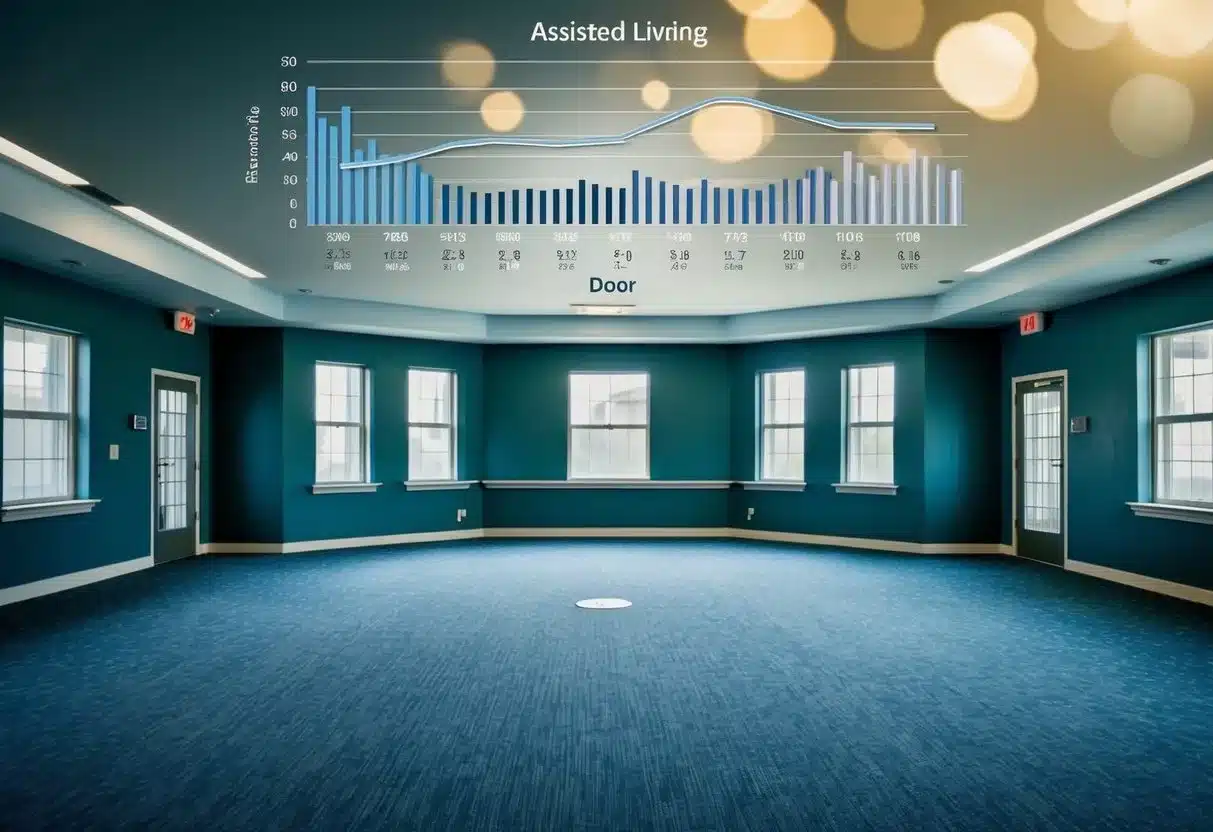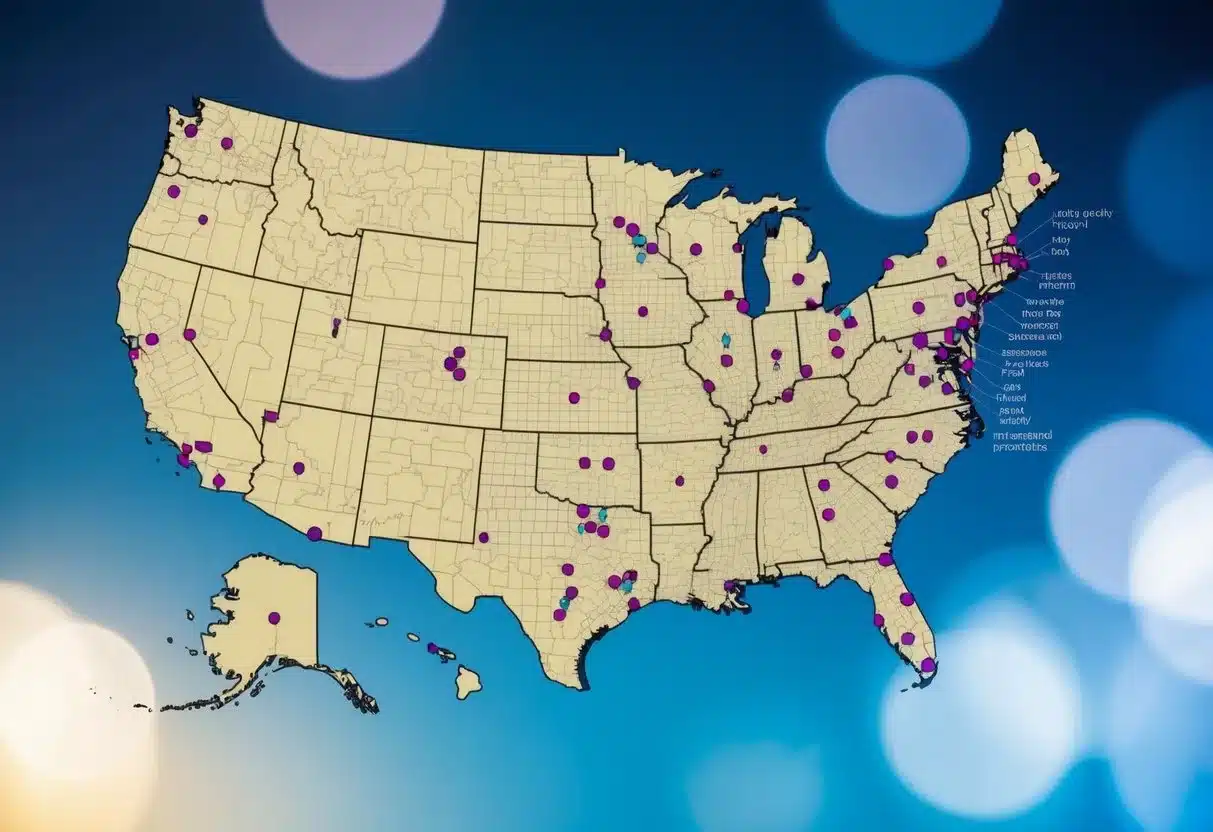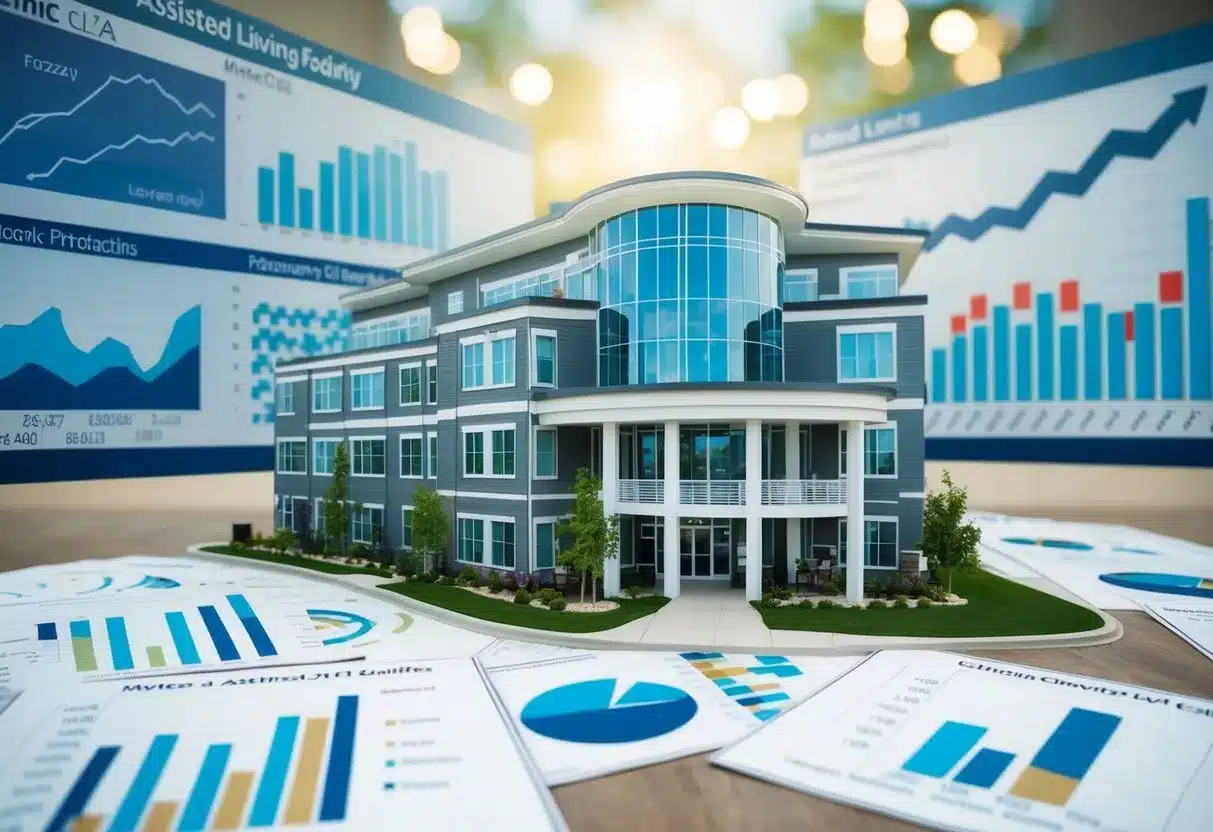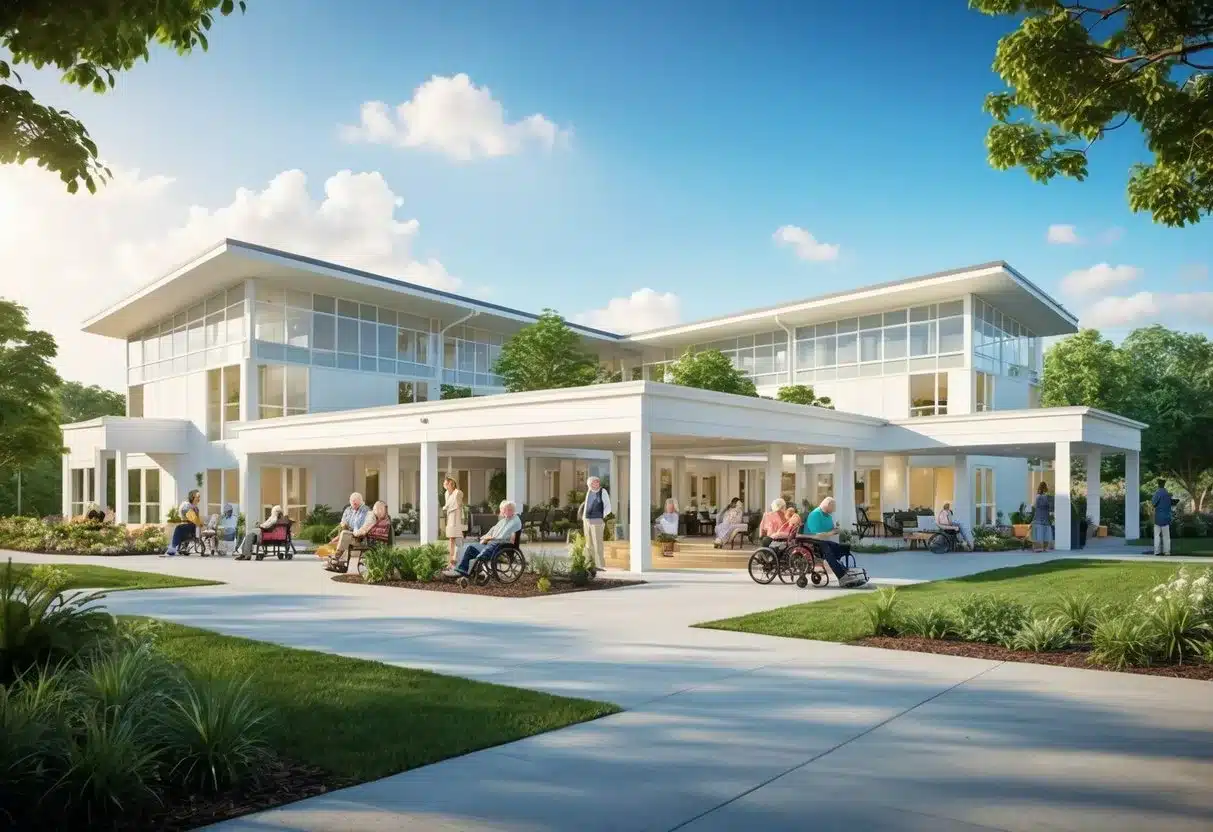Assisted living has become a crucial part of elder care in the United States. As the population ages, more seniors are looking for housing options that provide support while maintaining independence.
The U.S. assisted living facility market was valued at $91.8 billion in 2022 and is expected to grow at a rate of 5.53% annually through 2030.
This growth is driven by several factors. The number of adults aged 65 and older in the U.S. has reached about 62 million, making up 18% of the population. By 2054, this number is projected to increase to 84 million.
Assisted living communities are adapting to meet the diverse needs of this growing demographic.
The economic landscape of assisted living is changing. Around half of assisted living residents are at least 85 years old, with another 30% between 75 and 84. As the baby boomer generation ages, demand for these services is likely to rise further.
Providers are expanding their offerings and integrating new technologies to improve care and attract residents.
Key Takeaways
- The assisted living market is growing rapidly due to an aging population
- Facilities are adapting services to meet diverse needs of older adults
- Technology and changing demographics are shaping the future of senior living
Historical Overview and Development of Assisted Living

Assisted living facilities emerged in response to changing demographics and the needs of an aging population. This new model of care evolved to provide a middle ground between independent living and nursing homes.
The Emergence of Assisted Living Facilities
Assisted living facilities first appeared in the United States in the late 1970s. They aimed to offer a more homelike setting for older adults who needed some help but not full nursing care.
The concept gained popularity in the 1980s and 1990s. It provided an alternative to nursing homes, which were often seen as institutional and restrictive.
Assisted living facilities focused on promoting independence, dignity, and choice for residents. They offered services like meals, housekeeping, and help with daily activities.
Evolution and Response to Aging Population
As the baby boomer population aged, demand for assisted living grew. Facilities expanded their services to meet diverse needs and preferences.
Many communities added memory care units for those with Alzheimer’s or dementia. Some developed into Continuing Care Retirement Communities (CCRCs) offering multiple levels of care on one campus.
Technology played a bigger role, with facilities adopting systems for resident safety and health monitoring. The industry also faced challenges, including regulatory changes and staffing shortages.
Current Economic Landscape of Assisted Living
The assisted living industry has seen significant growth and changes in recent years. Market size and revenue have expanded, while the competitive landscape continues to evolve.
Market Size and Revenue Analysis
The U.S. senior living market reached USD 923.20 billion in 2023. Experts predict it will grow at a 4.16% annual rate from 2024 to 2030. This growth stems from an aging population.
The industry has bounced back from pandemic lows. Occupancy rates have risen across all senior care settings. This trend is expected to continue in 2024.
Assisted living facilities make up a large part of this market. They cater to seniors who need help with daily tasks but don’t require full-time medical care.
Competitive Landscape and Market Share
The assisted living market is fragmented, with many players vying for market share. Large chains and small local providers compete for residents.
Brookdale Senior Living stands out as a major player. It operates hundreds of communities across the U.S. Sunrise Senior Living is another key competitor, known for its high-end facilities.
Kindred Healthcare, while not solely focused on assisted living, has a significant presence in the senior care market. These companies face challenges from newer, boutique providers offering specialized care options.
Local operators also play a crucial role. They often provide more personalized service and community integration. This mix of national chains and local providers creates a diverse, competitive landscape.
Regulatory Environment and Compliance

Assisted living facilities face a complex web of regulations and compliance requirements. These rules shape how facilities operate and affect their financial outlook. Medicaid and Medicare also play key roles in this landscape.
Impact of Regulations on Facilities
Assisted living regulations vary widely by state. From 2020 to 2022, 33 states updated their rules. These changes can affect admission policies, staffing, and care standards.
Stricter rules often mean higher costs for facilities. They may need to hire more staff or upgrade equipment. This can cut into profits.
But regulations also protect residents and maintain quality. Some rules focus on medication management and dementia care. Others set training standards for staff.
Facilities must stay up-to-date with changing rules. This requires ongoing effort and resources. Some may need to hire compliance officers or legal experts.
Medicaid and Medicare’s Role
Medicaid is a key player in assisted living. It helps pay for care for many low-income seniors. But Medicaid policies differ by state.
Some states offer Medicaid waivers for assisted living. These can help cover costs for eligible residents. Facilities that accept Medicaid must meet certain standards.
Medicare generally doesn’t pay for long-term assisted living. But it may cover short-term stays or specific services. This affects how facilities bill for care.
Both programs influence facility finances. They can impact occupancy rates and revenue streams. Facilities must navigate complex rules to receive payments.
Market Segmentation and Services Offered

The assisted living industry offers a range of services tailored to different needs. These include basic personal care, specialized memory support, and skilled nursing care. The market is divided based on the level of care required and specific health conditions.
Types of Assisted Living Services
Assisted living facilities provide various services to support seniors’ daily lives. Basic services often include:
• Meal preparation and dining
• Housekeeping and laundry
• Medication management
• Personal care assistance
• Social activities and events
Some facilities offer more advanced care like physical therapy or wound care. The level of service varies based on residents’ needs and facility capabilities.
Many places now focus on promoting independence. They encourage residents to do tasks they can manage while providing help when needed.
Specialized Care and Memory Care
Memory care is a growing segment in assisted living. It caters to seniors with Alzheimer’s disease or other forms of dementia.
Memory care units have:
• Secure environments to prevent wandering
• Specially trained staff
• Activities designed for cognitive stimulation
These units often have a higher staff-to-resident ratio. This ensures more personalized attention for residents with memory issues.
Some facilities also offer specialized care for conditions like Parkinson’s disease. These units provide targeted therapies and support services.
Demographic Dynamics and Target Markets

The elderly population in the United States is growing rapidly, driving demand for senior living options. Many older adults are showing a preference for assisted living communities that offer both independence and support.
Elderly Population Statistics
The number of Americans aged 75 and older increased from 18.5 million in recent years. This age group is a key demographic for assisted living facilities. Currently, about 62 million adults aged 65 and older live in the U.S., making up 18% of the population.
Projections show continued growth in this age group. The Population Reference Bureau forecasts a significant increase in the elderly population over the next decade. This demographic shift is a major factor driving the expansion of the senior living market.
Senior Living Community Preference Trends
Many older adults are choosing assisted living communities for companionship, security, and help with daily activities. These facilities offer a balance of independence and support that appeals to seniors.
About 26% of assisted living residents need help with three or more daily activities. This shows the importance of care services in these communities. Assisted living facilities are adapting to meet diverse needs, offering various levels of care and amenities.
The U.S. assisted living facility market was valued at $91.8 billion in 2022. It’s expected to grow at a rate of 5.53% per year from 2023 to 2030. This growth reflects the increasing demand for these communities among the elderly population.
Financial Considerations for Consumers and Providers

Assisted living costs and funding vary widely. Providers face challenges in balancing expenses and revenue. Both consumers and operators must navigate complex financial landscapes.
Consumer Costs and Payment Methods
Assisted living residents are typically 75 years or older. Monthly fees range from $3,000 to $6,000, depending on location and services.
Most residents pay out-of-pocket. Some use long-term care insurance or Veterans Affairs benefits. Medicaid may cover costs for eligible low-income seniors in certain states.
Inflation impacts assisted living expenses. Costs rise about 3-5% annually. Families should plan for increasing fees over time.
Additional charges often apply for specialized care. Memory care units for dementia patients can cost 20-30% more than standard assisted living.
Provider Revenue Streams and Challenges
Assisted living facilities rely on resident fees as their main income source. Some providers struggle with profitability. Nearly half operate at a loss.
Key challenges include:
- Rising labor costs
- Increasing food and supply expenses
- Maintaining occupancy rates
Providers may offer tiered pricing based on care levels. This helps match revenue to service costs.
Some facilities diversify income through:
- Adult day services
- Short-term respite care
- Home care partnerships
Operators must balance affordability with quality care. This requires efficient operations and strategic financial planning.
Impact of COVID-19 on Assisted Living

The COVID-19 pandemic severely affected assisted living facilities. It led to significant changes in operations, safety protocols, and financial stability.
Operational Adjustments and Safety Measures
Assisted living facilities made major changes to protect residents from COVID-19. They limited visitors and group activities to reduce virus spread. Staff wore masks and other protective gear.
Facilities increased cleaning and disinfecting. They checked residents and staff for symptoms daily. Many created isolation areas for sick residents.
Testing became a key safety measure. Facilities tested residents and staff regularly. This helped catch cases early.
Staffing shortages were a big challenge. Some staff got sick or feared coming to work. Facilities had to find ways to maintain care with fewer workers.
Financial Implications and Recovery
COVID-19 hit assisted living facilities hard financially. Extra safety supplies and staff costs increased expenses.
At the same time, fewer new residents moved in. Some existing residents left due to fears about the virus. This meant less income for facilities.
Many facilities faced financial strain. Some had to close or merge with other companies.
Government aid helped some facilities stay afloat. But the long-term financial impact remains unclear.
Recovery will likely be slow. Rebuilding trust with potential residents and families is crucial. Facilities must show they can provide safe, high-quality care despite pandemic challenges.
Technology Integration and Telemedicine

New tech is changing how seniors get care. Remote health services and smart devices are making assisted living better and more connected.
Innovation in Senior Care Services
Smart home tech is helping seniors live more independently. Voice-activated systems let residents control lights, thermostats, and more. Wearable devices track health data and can alert staff if there’s a fall.
AI chatbots provide companionship and reminders about medications. Virtual reality offers fun activities and cognitive stimulation.
Robotic assistants are being tested to help with daily tasks. These innovations aim to improve quality of life and reduce caregiver workload.
The Adoption of Telemedicine and Remote Monitoring
Telemedicine is growing fast in senior care. Video calls let residents talk to doctors without leaving home. This is great for routine check-ups and minor health issues.
Remote monitoring tools track vital signs and send alerts if something’s wrong. Smart pill dispensers ensure correct medication use.
Telemedicine improves access to specialists, especially in rural areas. It cuts travel time and costs for seniors and their families.
Many assisted living facilities now offer telemedicine services. This trend is likely to continue as the tech gets better and more accepted.
Geographic Analysis and Location Trends

The U.S. assisted living facility market shows distinct regional patterns and location preferences. These trends impact facility placement and accessibility for residents across North America.
North America Market Insights
The U.S. assisted living facility market is experiencing significant growth. It reached a value of $91.8 billion in 2022 and is projected to expand at a compound annual growth rate of 5.53% from 2023 to 2030.
Different regions show varying levels of market saturation and demand. Urban areas tend to have a higher concentration of facilities due to larger populations and better access to healthcare services.
Rural regions often face challenges in providing adequate assisted living options. This creates opportunities for new facilities in underserved areas.
Location Preferences and Accessibility
Assisted living facilities are increasingly focusing on strategic locations to meet resident needs. Many seniors prefer facilities close to their previous homes or family members.
Proximity to healthcare centers, shopping areas, and recreational facilities is a key factor in location selection. This allows residents to maintain independence and engage in community activities.
Accessibility is crucial for both residents and visitors. Facilities near public transportation routes or with ample parking are often more desirable.
Some assisted living providers are exploring innovative location concepts. These include urban high-rises for seniors who prefer city living and rural retreats for those seeking a quieter lifestyle.
Future Projections and Growth Opportunities

The assisted living market is poised for substantial growth in the coming years. Demographic shifts and increasing demand for senior care services are driving expansion in this sector.
Predictions for Market Growth and Trends
The U.S. assisted living facility market is expected to grow at a compound annual growth rate (CAGR) of 5.53% from 2023 to 2030. This growth is fueled by the aging baby boomer generation seeking quality care options.
By 2024, it’s projected that over 800,000 American seniors will be living in assisted living communities. This number is likely to increase as the population ages.
Key trends shaping the industry include:
- Focus on personalized care
- Integration of technology for health monitoring
- Emphasis on social activities and community engagement
Opportunities for New Entrants and Expansion
The growing demand for assisted living facilities presents significant opportunities for new entrants and existing providers to expand their services.
Areas with potential for growth include:
- Specialized care for residents with dementia or Alzheimer’s
- Luxury assisted living options for affluent seniors
- Affordable assisted living models to serve middle-income seniors
Investors are showing increased interest in the sector. A recent survey of senior housing real estate professionals indicates positive sentiment towards rent growth and occupancy rates in 2024.
To capitalize on these opportunities, providers should focus on:
- Innovative care models
- Strategic partnerships with healthcare providers
- Investments in staff training and retention
Transparency in Assisted Living

Clear communication and openness are vital in assisted living facilities. These factors help residents and families make informed decisions and ensure quality care.
Importance of Clear Communication with Clients
Assisted living facilities must provide clear information to residents and their families. This includes details about services, costs, and policies.
Telling the story through data and best practices is key to building trust.
Facilities should offer:
- Detailed pricing structures
- Clear explanations of care levels
- Regular updates on resident health
Open dialogue helps prevent misunderstandings and ensures resident needs are met. It also allows families to make informed choices about care options.
Facility Transparency and Quality Indicators
Quality indicators help measure and compare assisted living facilities. These metrics provide valuable insights into facility performance and resident satisfaction.
Common quality indicators include:
- Staff-to-resident ratios
- Safety records
- Resident satisfaction scores
- Health inspection results
Positive occupancy trends often reflect good quality indicators. Facilities should make these metrics easily accessible to the public.
Transparency in quality indicators helps:
- Families compare facilities
- Facilities improve their services
- Regulators ensure compliance
Frequently Asked Questions

The senior living industry is experiencing significant growth and change. Key factors shaping the market include demographic shifts, economic trends, and evolving care preferences.
What are the current trends in the senior living industry for 2024?
Senior living communities are focusing more on wellness and quality of life. There’s a growing emphasis on personalized care and amenities tailored to residents’ individual needs and preferences.
Technology integration is becoming more common. Many facilities are adopting smart home features and health monitoring systems to enhance safety and convenience for residents.
What is the projected compound annual growth rate (CAGR) for the senior living market?
The U.S. senior living market is expected to grow at a CAGR of 4.16% from 2024 to 2030. This growth is driven by the increasing elderly population and rising demand for specialized care services.
What is the average occupancy rate for assisted living facilities across various states?
Occupancy rates vary by state and region. On average, assisted living facilities maintain occupancy rates between 80% and 90%. Some states may have higher rates due to demographic factors and local market conditions.
How many assisted living facilities currently operate in the United States?
As of 2024, there are approximately 28,900 assisted living facilities operating in the United States. This number continues to grow as demand for senior care services increases.
What are the primary factors driving the future of senior care?
The aging baby boomer population is a major driver of growth in senior care. Improved healthcare leading to longer lifespans also increases demand for long-term care options.
Changing family dynamics and preferences for professional care contribute to the industry’s expansion. Many seniors and their families are seeking alternatives to traditional nursing homes.
What is the expected outlook for the senior living industry over the next decade?
The senior living industry is poised for continued growth.
By 2030, the U.S. senior living market is projected to reach a value of over $1 trillion.
Experts predict a shift towards more diverse and specialized care options.
This includes memory care units, continuing care retirement communities, and age-in-place services.